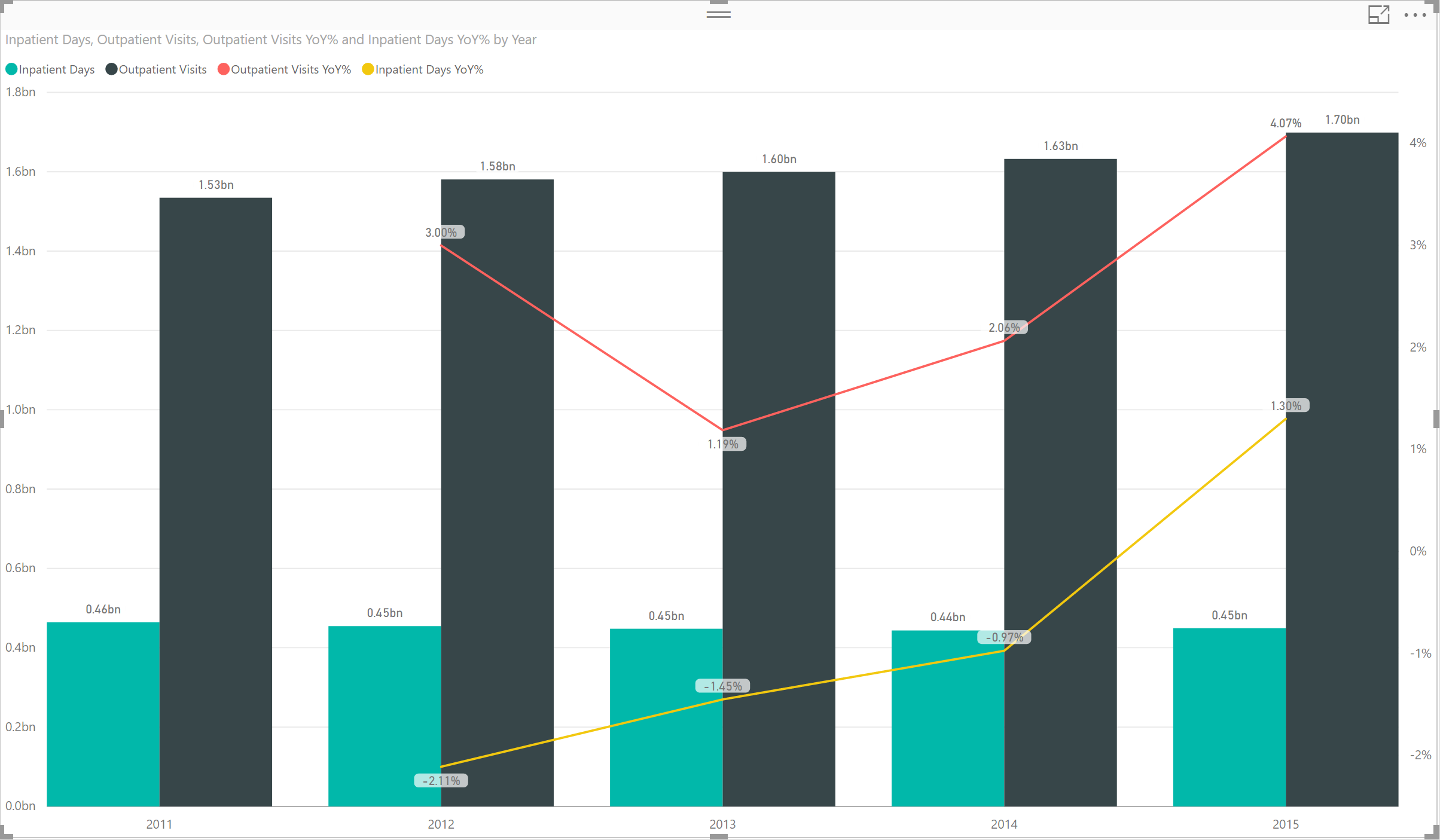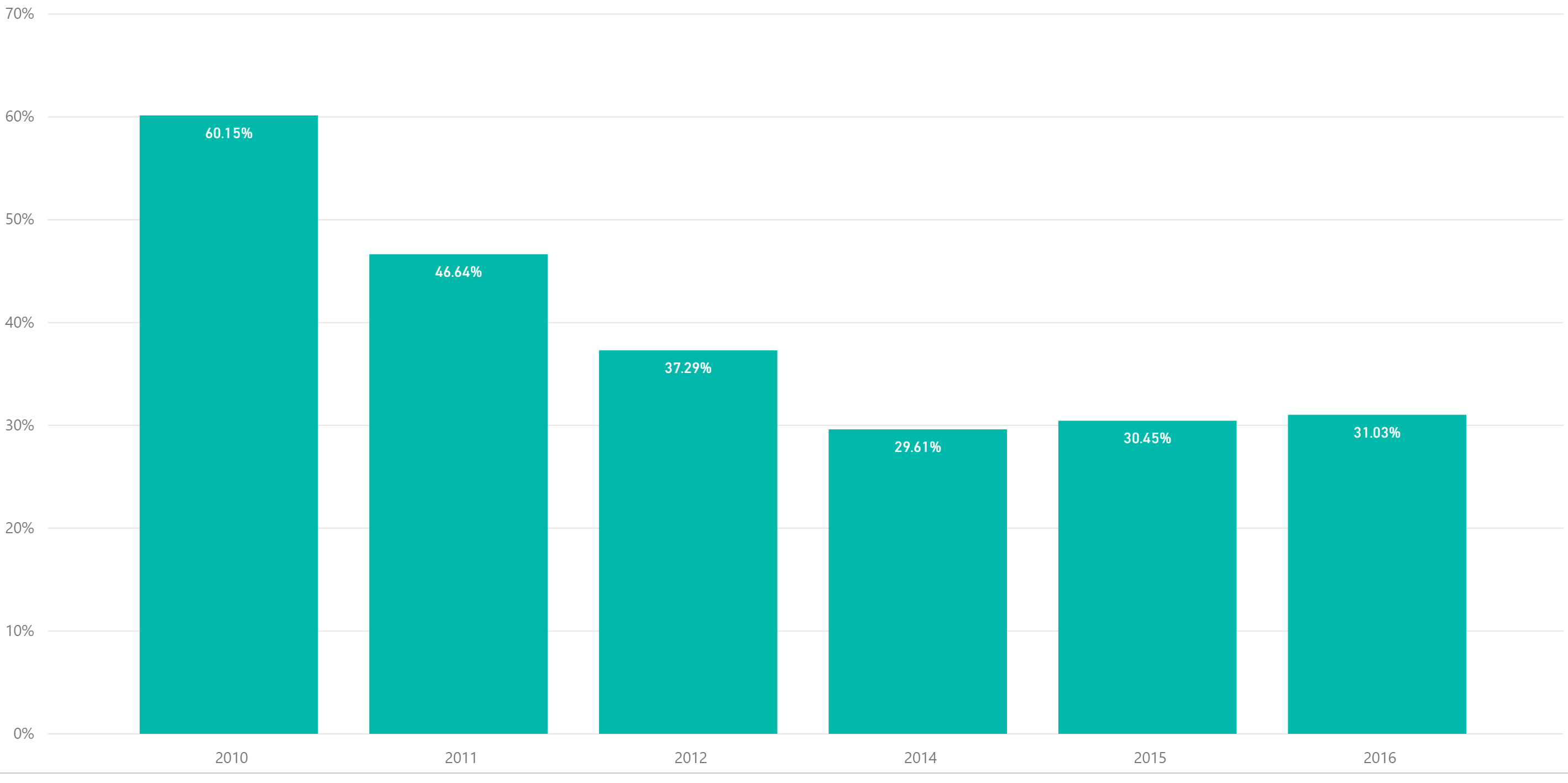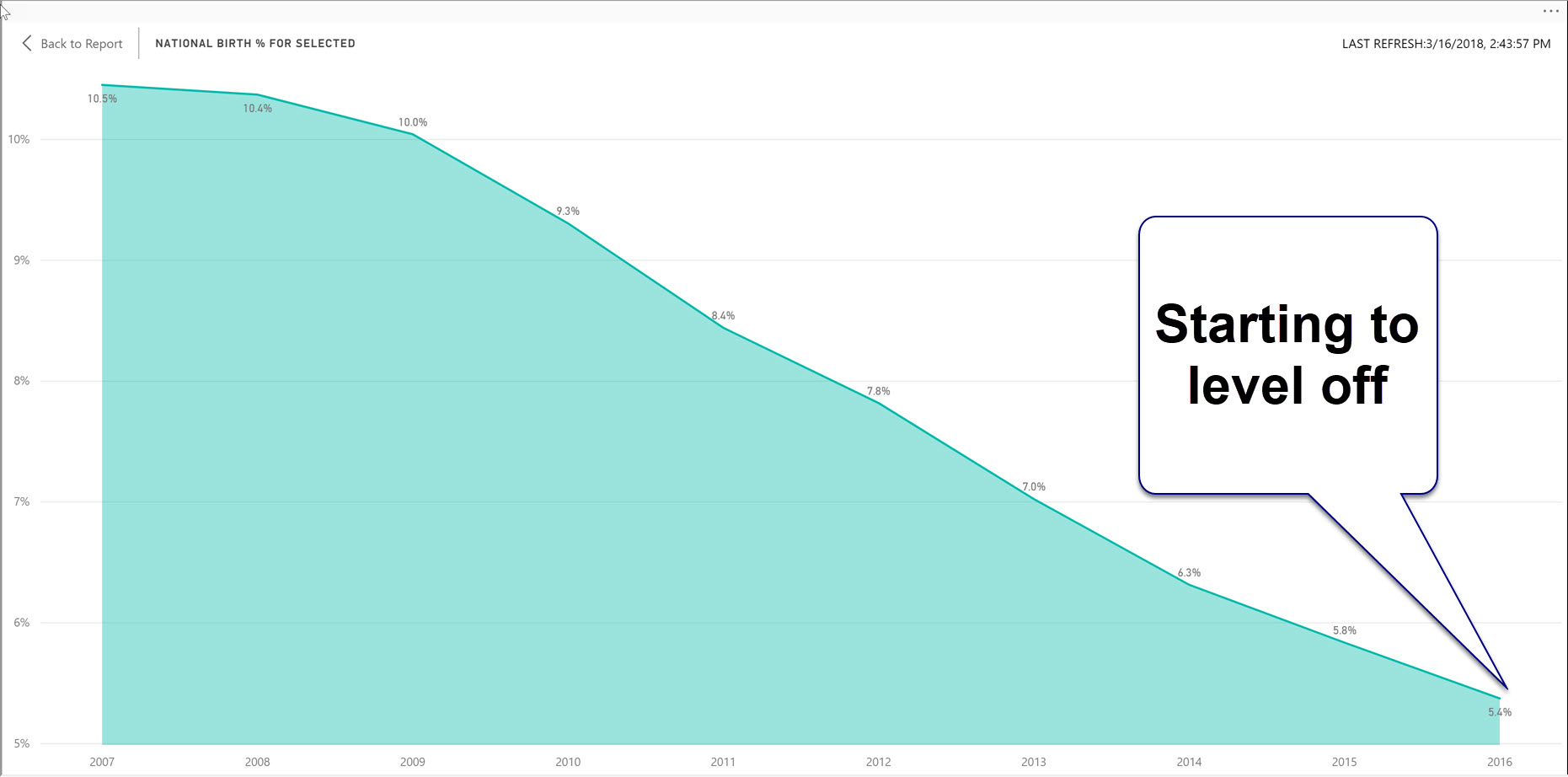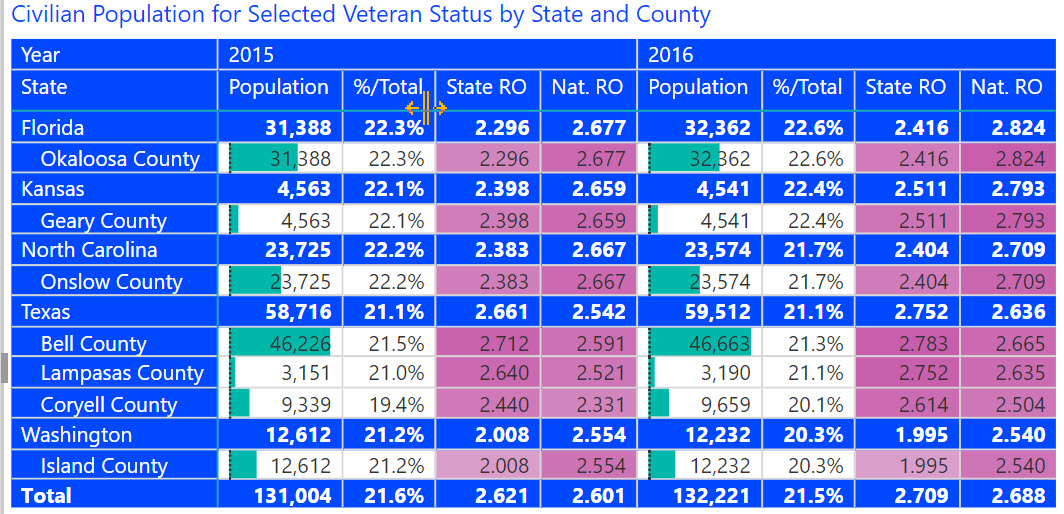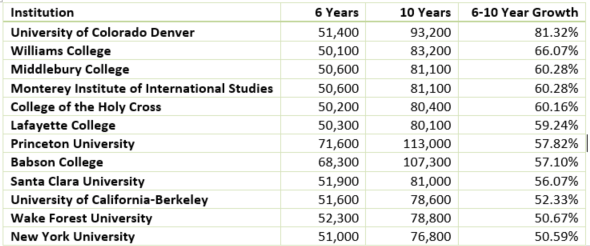CMS began developing measures evaluating imaging efficiency back in 2007. These performance measures have been distributed as part of Hospital Compare for the past four years. Lower percentages suggest more efficient use of medical imaging. The purpose of reporting these measures is to reduce unnecessary exposure to contrast materials and/or radiation, to ensure adherence to evidence-based medicine and practice guidelines, and to prevent wasteful use of Medicare resources. We looked at this data using the Quality Ratings Interactive which analyzes all of the quality ratings measures from CMS.
-
Overall, imaging performance across the six measures has declined over the past four years or remained flat (MRI for lower back pain has not changed much).
-
However, there is incredible variability among hospitals across all of the imaging measures as shown in the box and whiskers plot below.
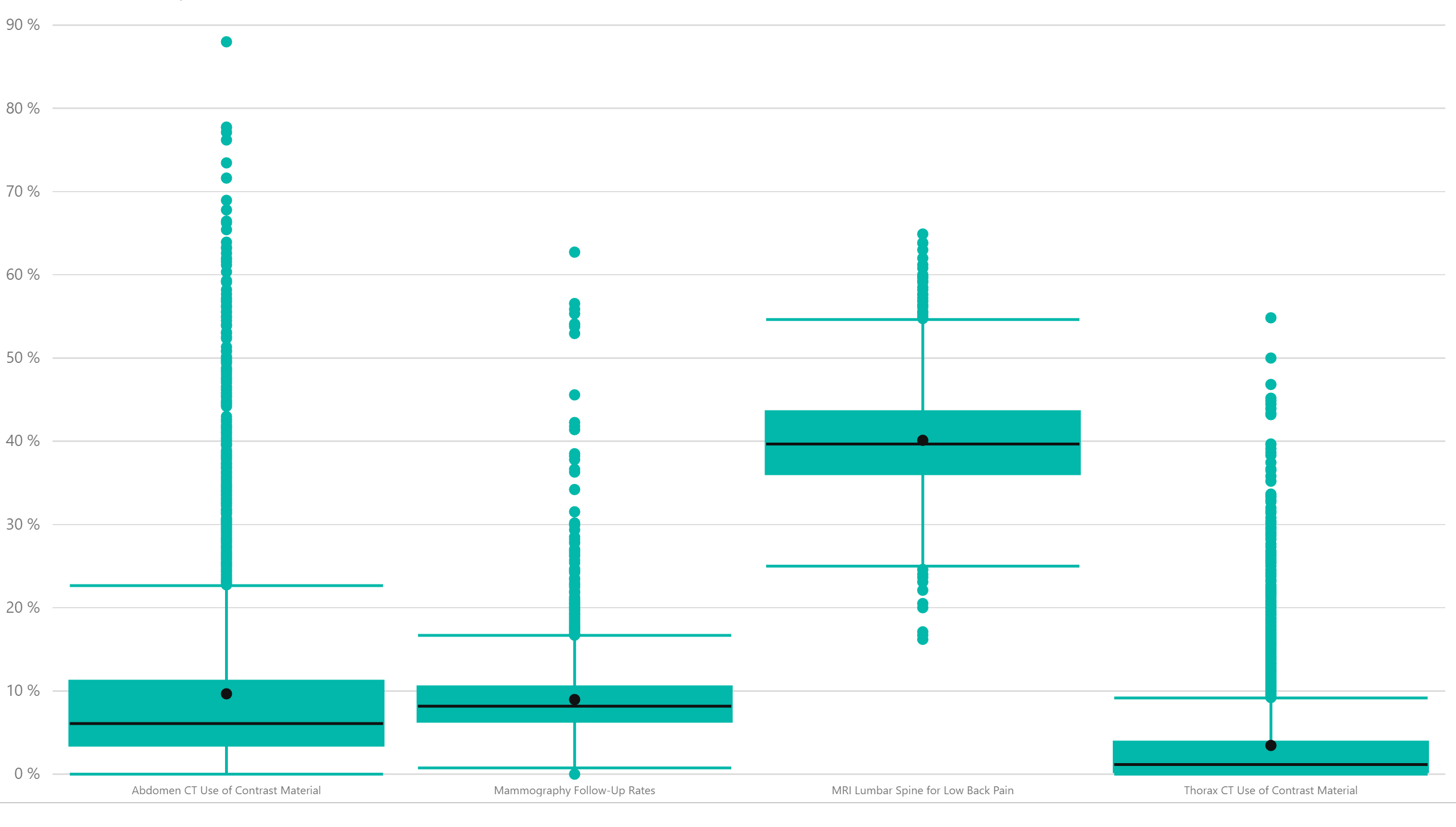
We picked four of the measures to illustrate. The line indicates the median of the performance rate with the inner and outer lines representing the inner two quartiles. Anything outside of that is an outlier. We can see that the number of outliers covers a very wide range of results and even within the inner quartiles, there is a pretty wide range of results (see MRI of the back in particular). Further, the variability has not changed a whole lot over the trailing four years.
The Lewin Group was contracted by CMS to perform an assessment on these performance rates and they make some interesting observations in their research. You can find these studies on the QualityNet site.

